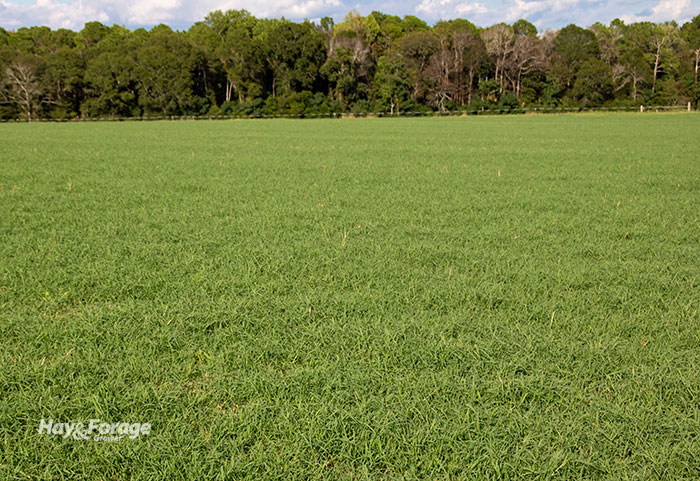
Annual ryegrass may have merit in some forage systems, but this cool-season species can be the bane of Southern hayfields.
In a recent article from Texas A&M AgriLife Extension, Vanessa Corriher-Olson says annual ryegrass seed can survive in the soil for multiple years. When winter rainfall promotes seed germination in bermudagrass and bahiagrass stands, there can be implications on forage production during the following season.
“Later maturity of annual ryegrass can delay or prevent our warm-season perennial forages from breaking dormancy in April or May, therefore delaying our initial hay cutting,” the extension forage specialist asserts. Annual ryegrass is also allelopathic, which means it produces chemicals that can inhibit the growth of other crops.
Graze, spray, or bale
One way to avoid unwanted annual ryegrass is to heavily graze hayfields. This can work in stands that are equipped with adequate fencing and available water. Despite being deemed a weed by some farmers, annual ryegrass can have relatively good forage quality for livestock.
In systems that are not suited for grazing, Corriher-Olson suggests using preemergence herbicides that are labeled for dormant bermudagrass and bahiagrass. Spray these products before it rains for the best results.
Postemergence herbicides can also be effective in the winter if they are used before it freezes and before annual ryegrass goes to seed. Corriher-Olson recommends using glyphosate or Pastora in bermudagrass stands. She notes there are no selective herbicides labeled for postemergence control of annual ryegrass for bahiagrass but suggests adminstering spot treatments of glyphosate in these fields.
“As with any herbicide application, timing is critical, along with following label directions,” she asserts. “Ideally for control, annual ryegrass needs to be sprayed when plants are less than 6 inches tall.”
Another way to discourage annual ryegrass growth is by maintaining bermudagrass and bahiagrass stubble above 4 inches after hay harvest.
“This may not provide 100% control; however, competition can help to reduce undesired plant growth,” Corriher-Olson states. “Maintaining a higher stubble height can also be beneficial for the warm-season perennial future growing season. Higher stubble height means more substantial root structure to capture deeper soil moisture and nutrients,” she adds.
Harvesting annual ryegrass for baleage or dry hay next year can be a last-ditch effort to eliminate it from hayfields. Even so, Corriher-Olson cautions this practice can be prevented by excessive rainfall in the spring.

